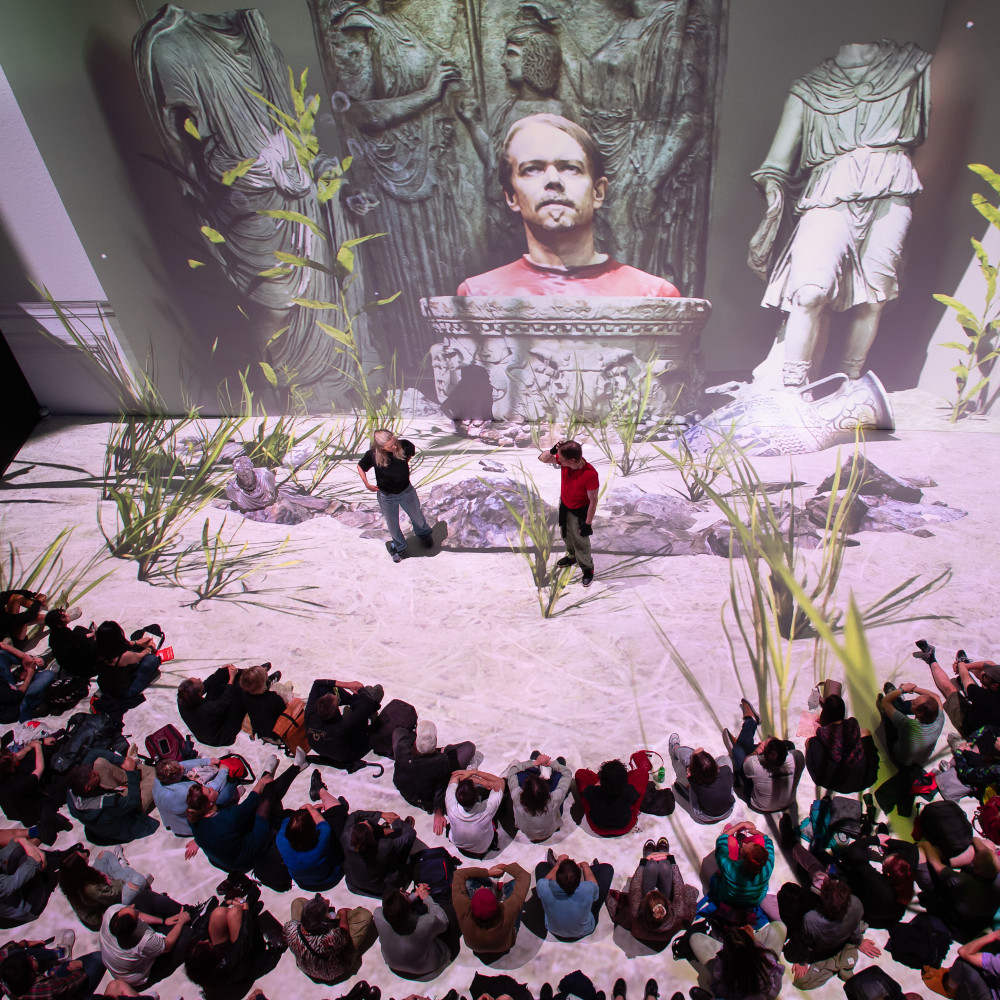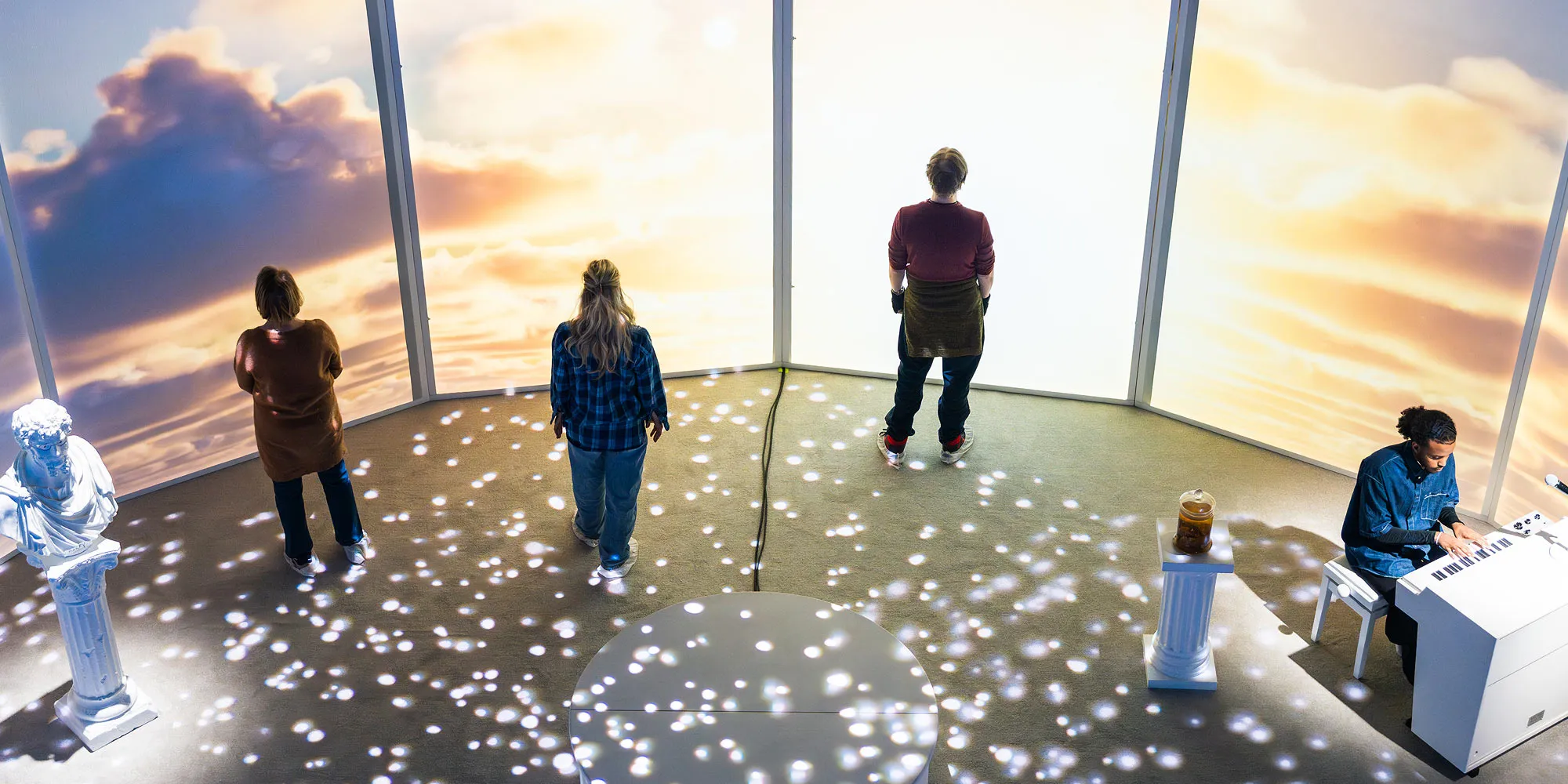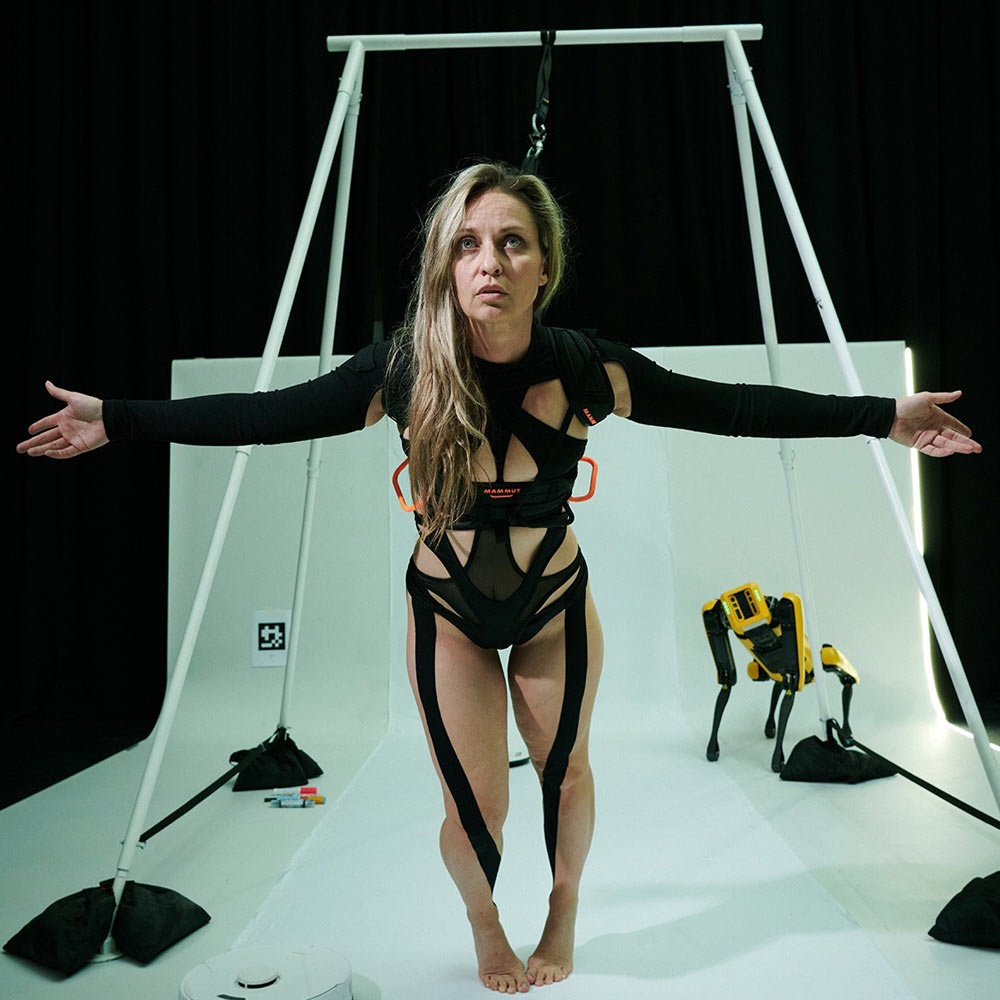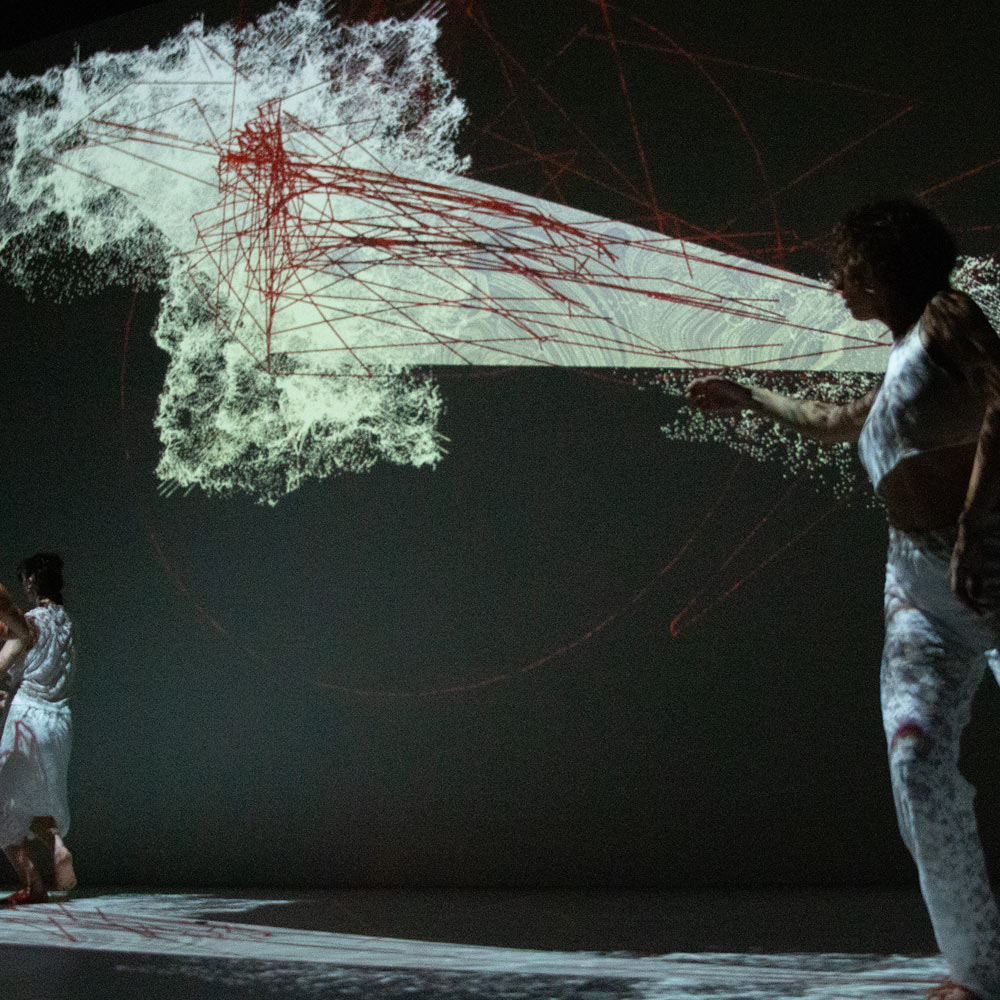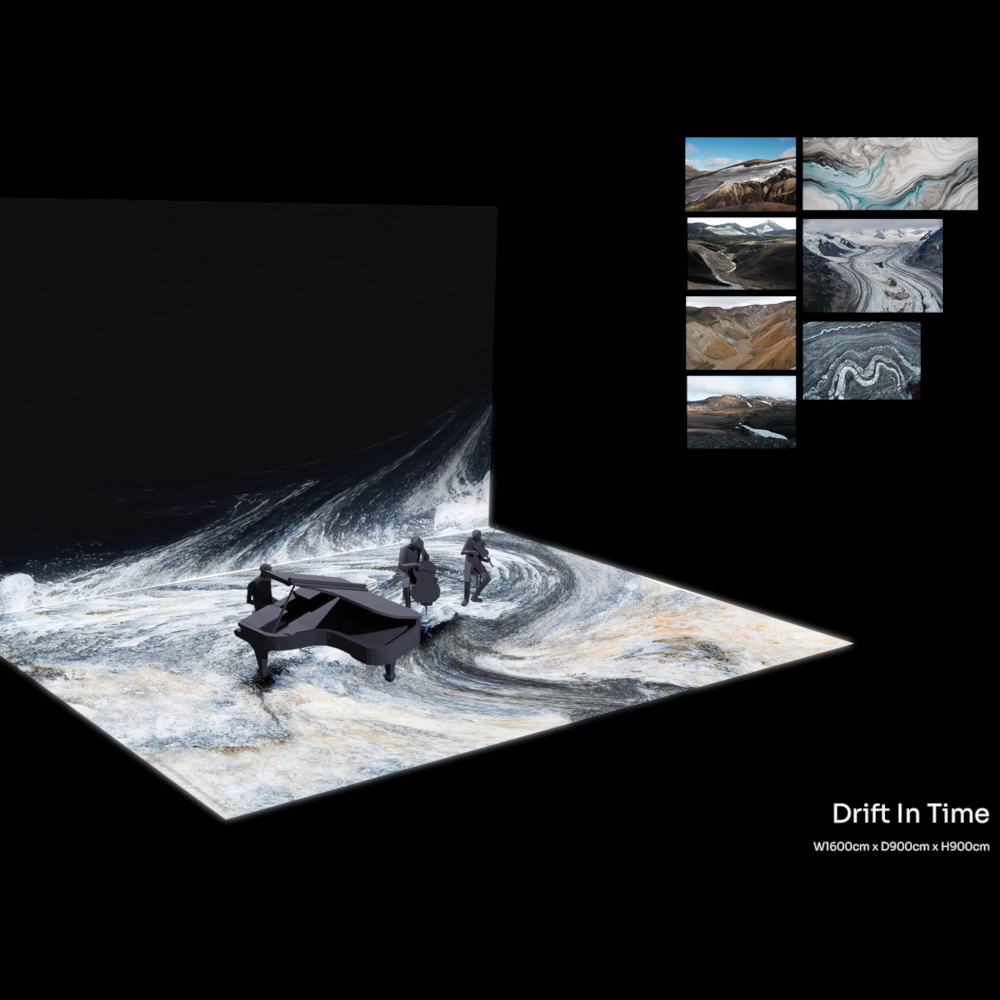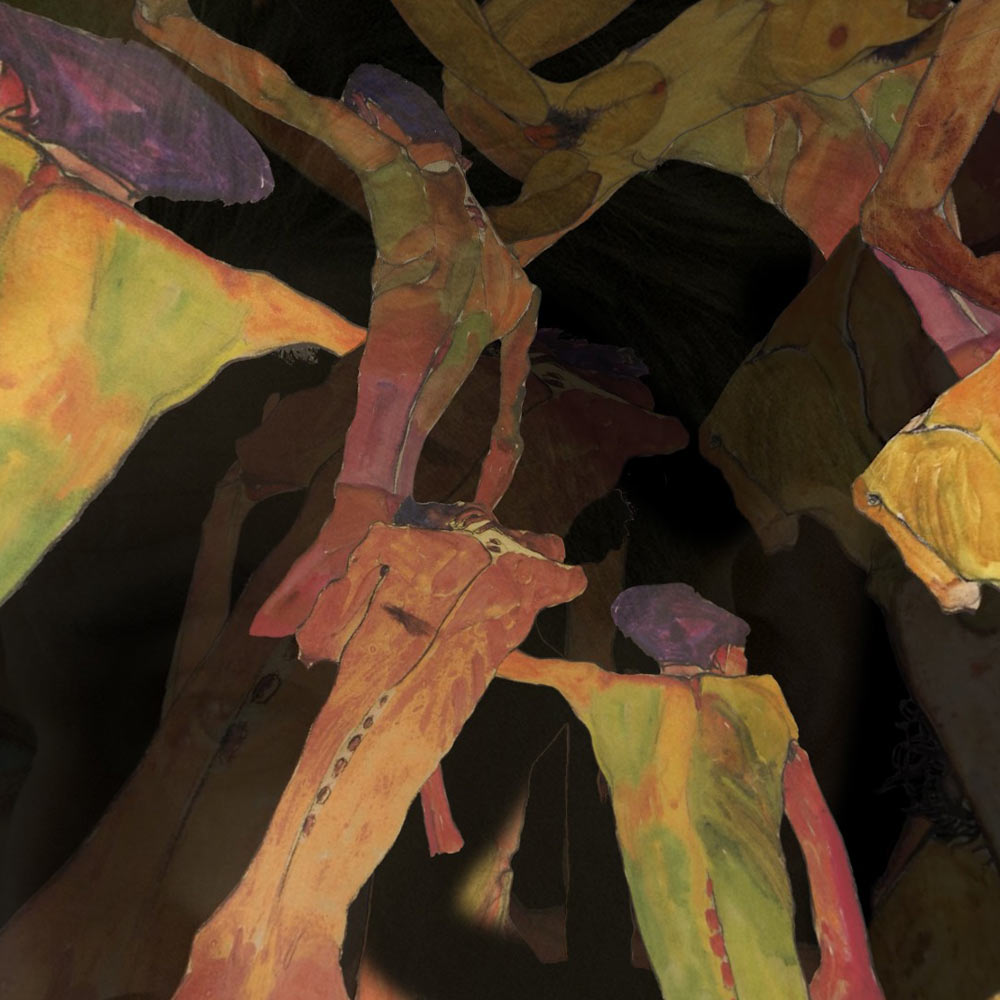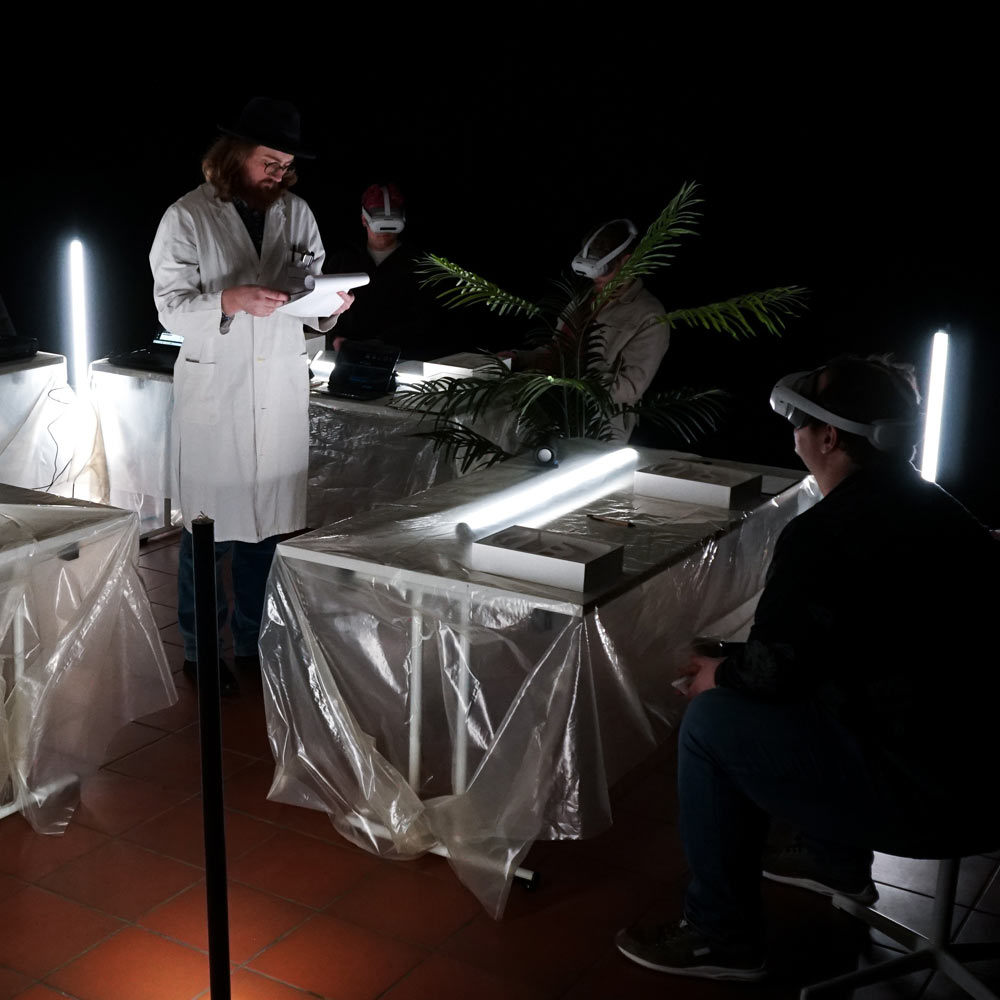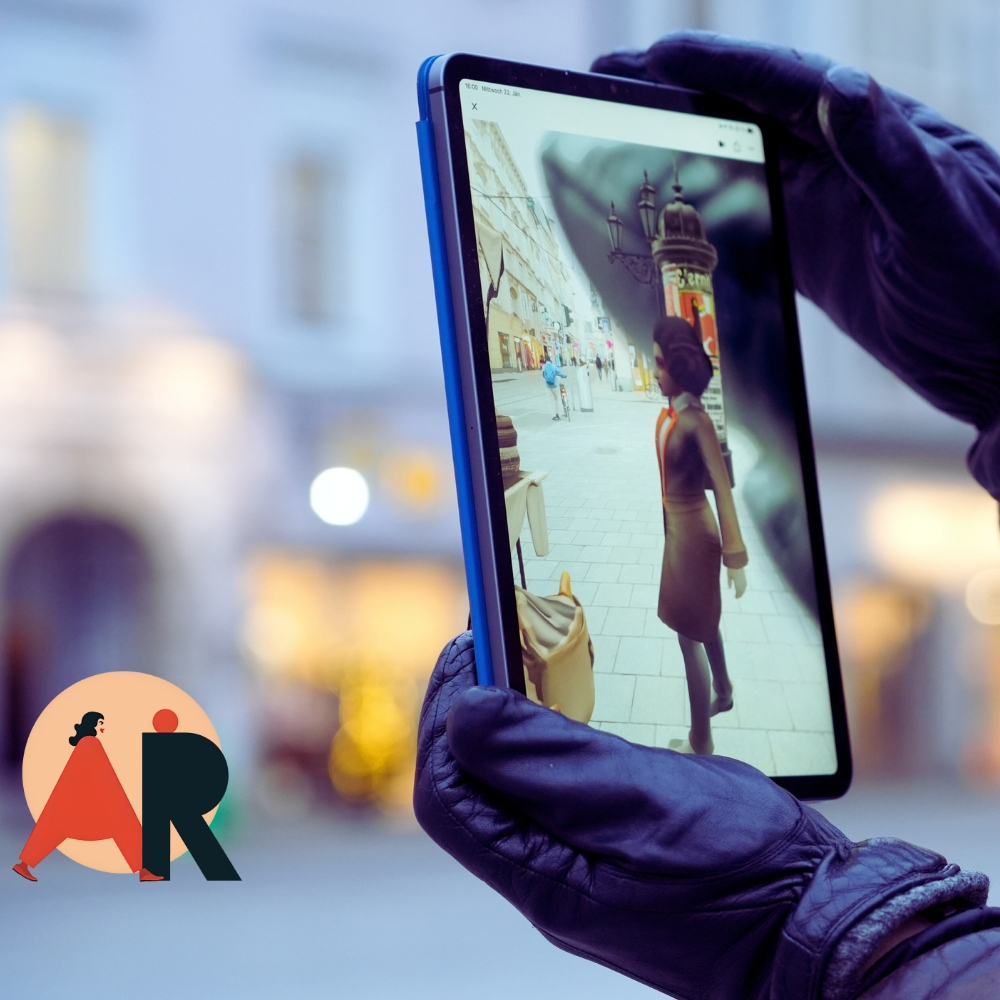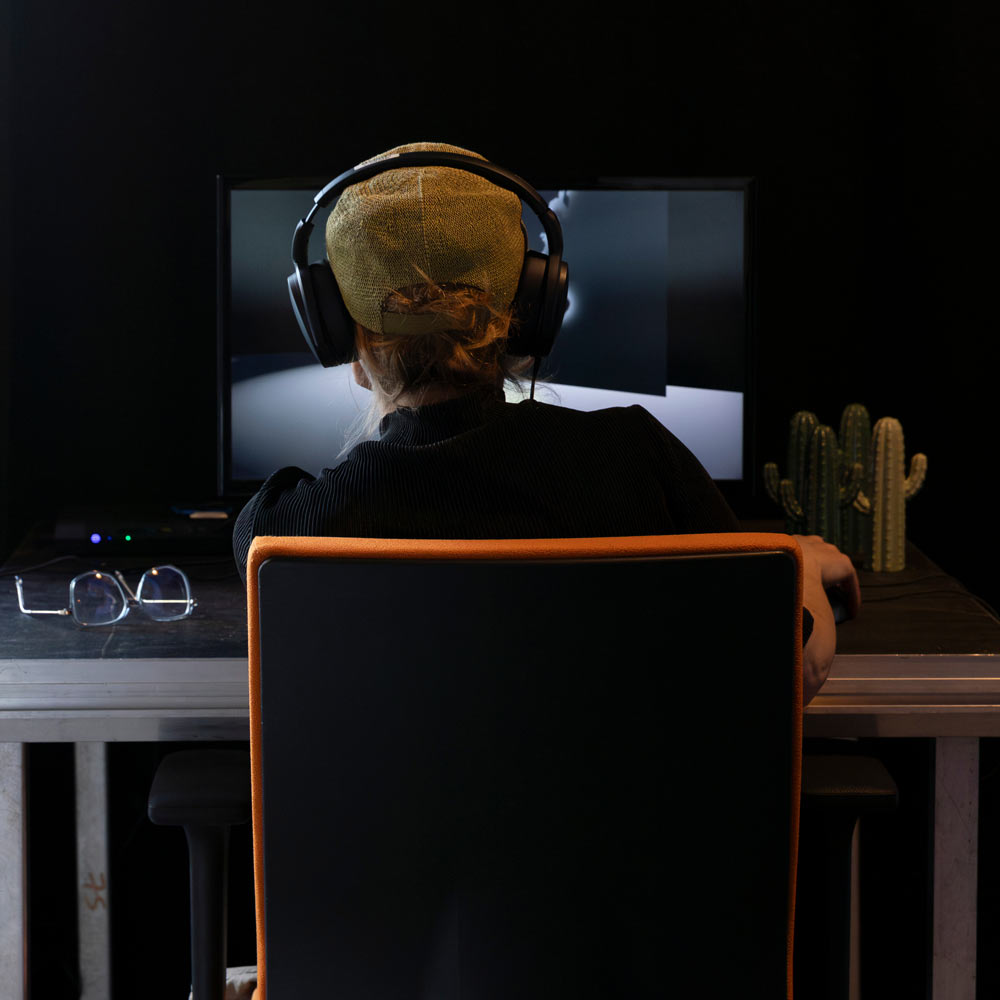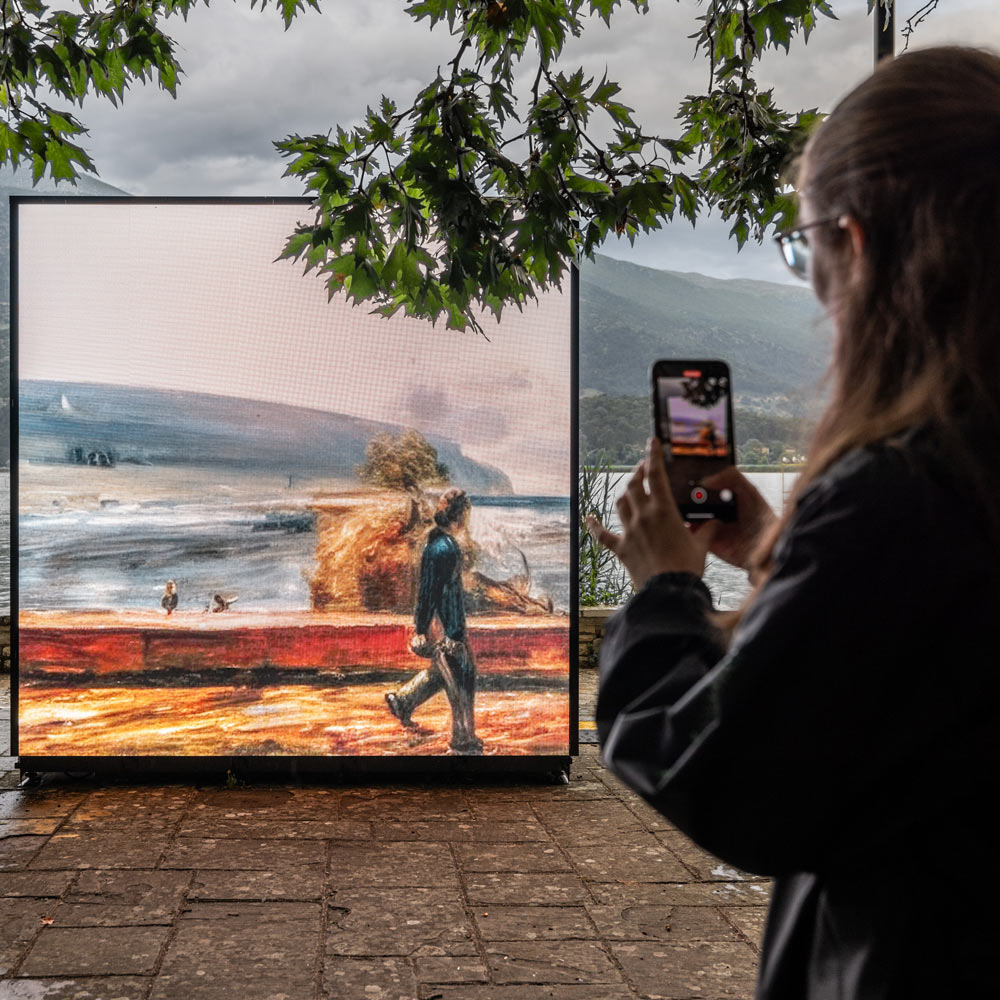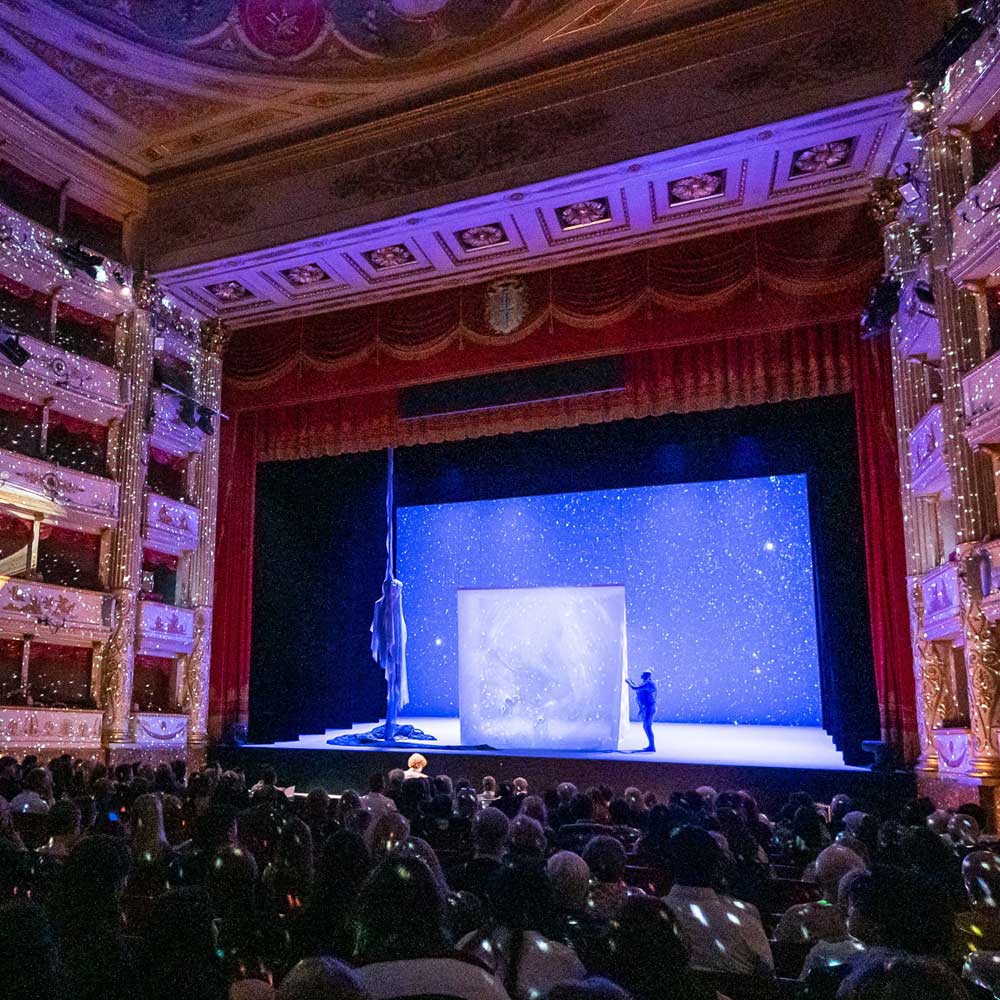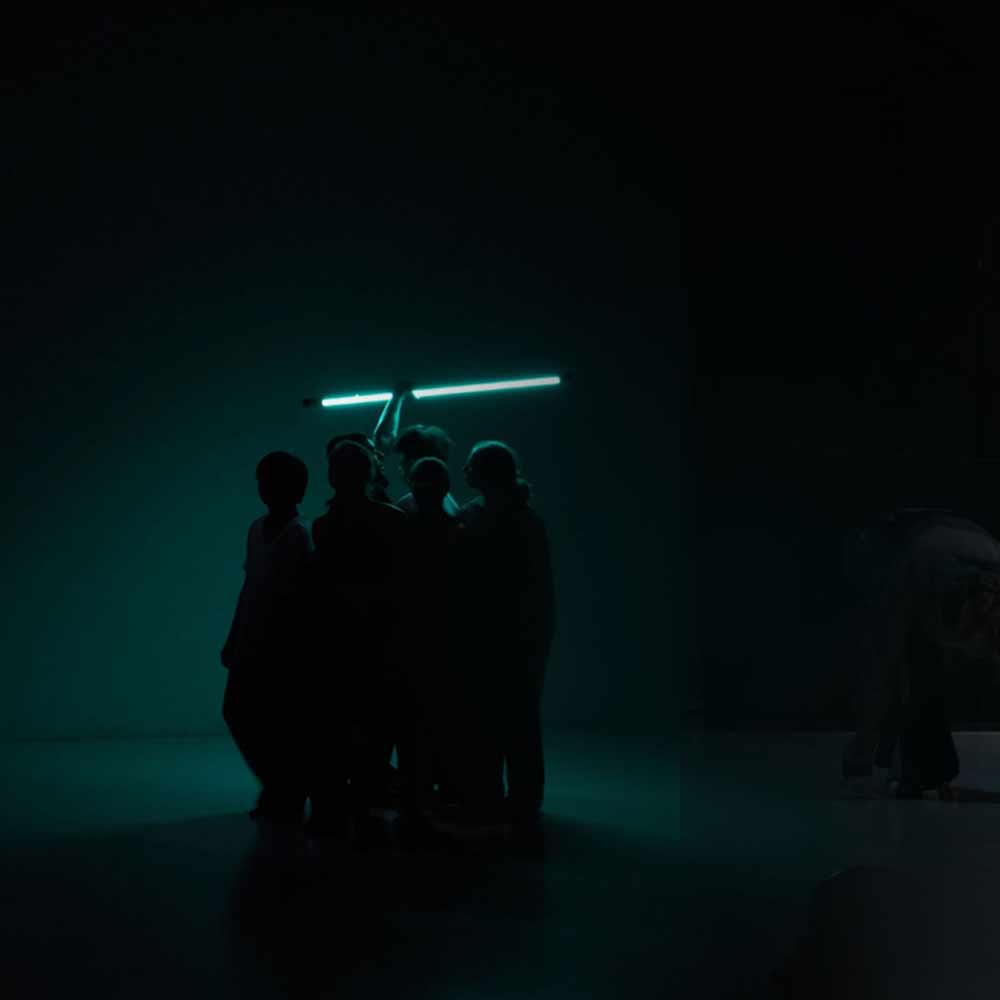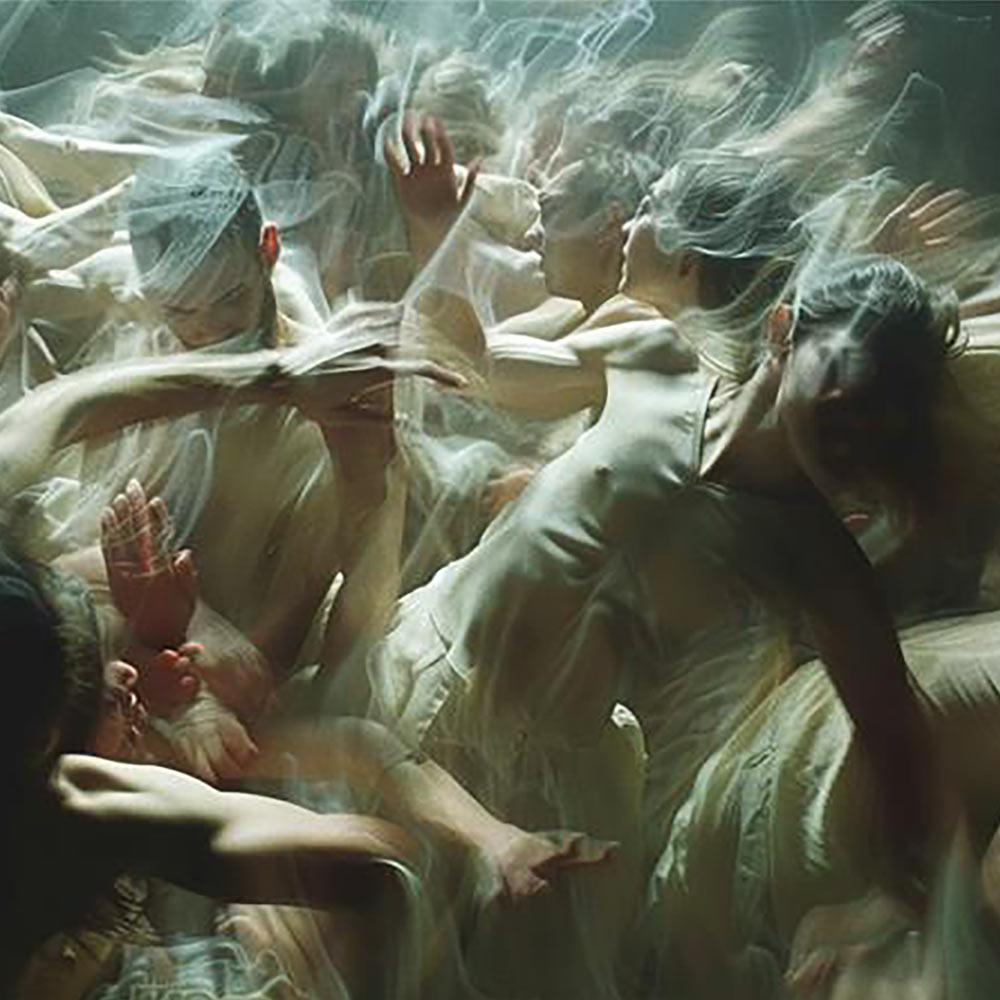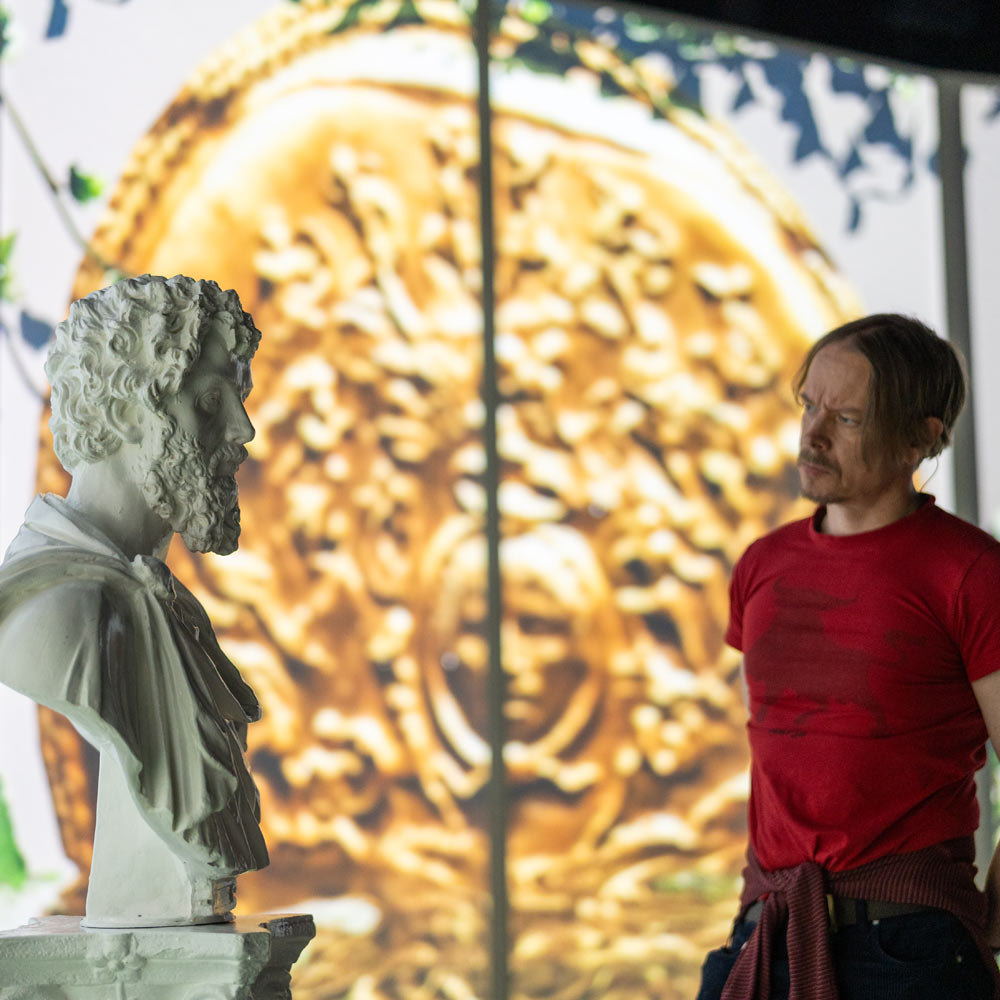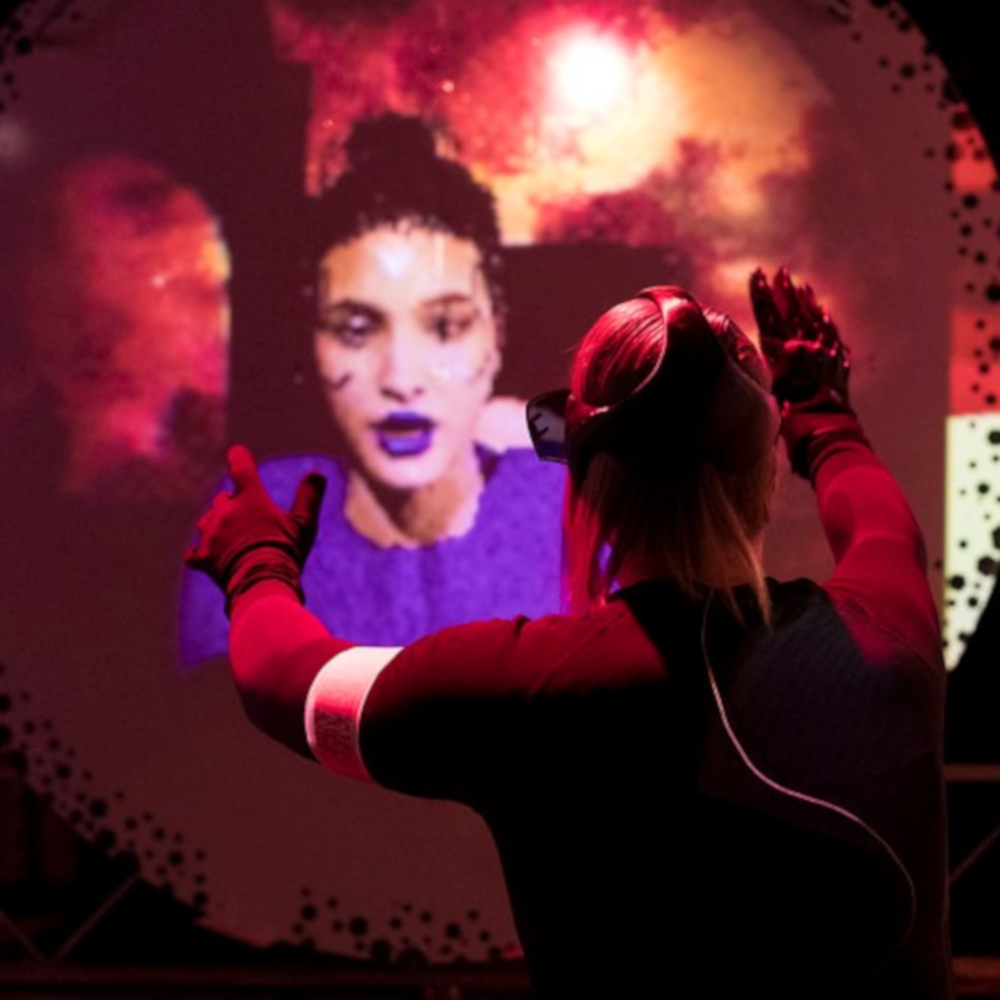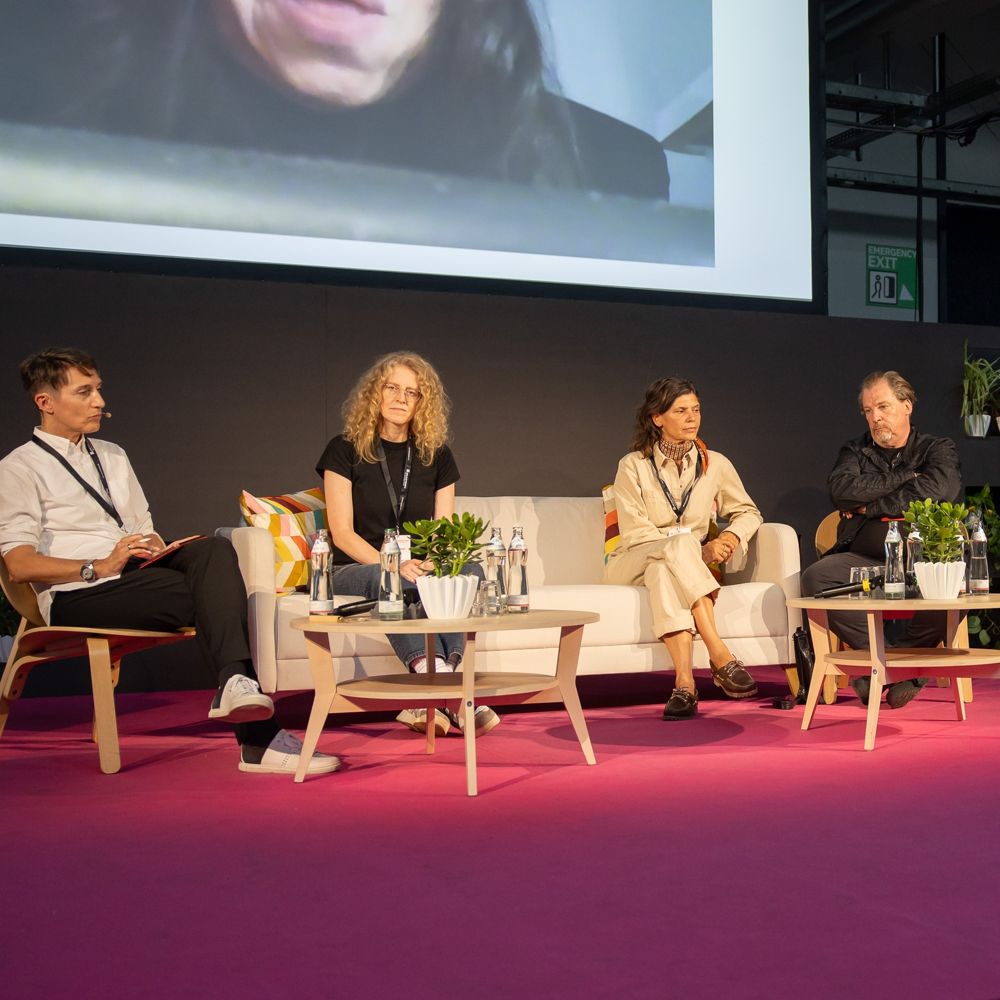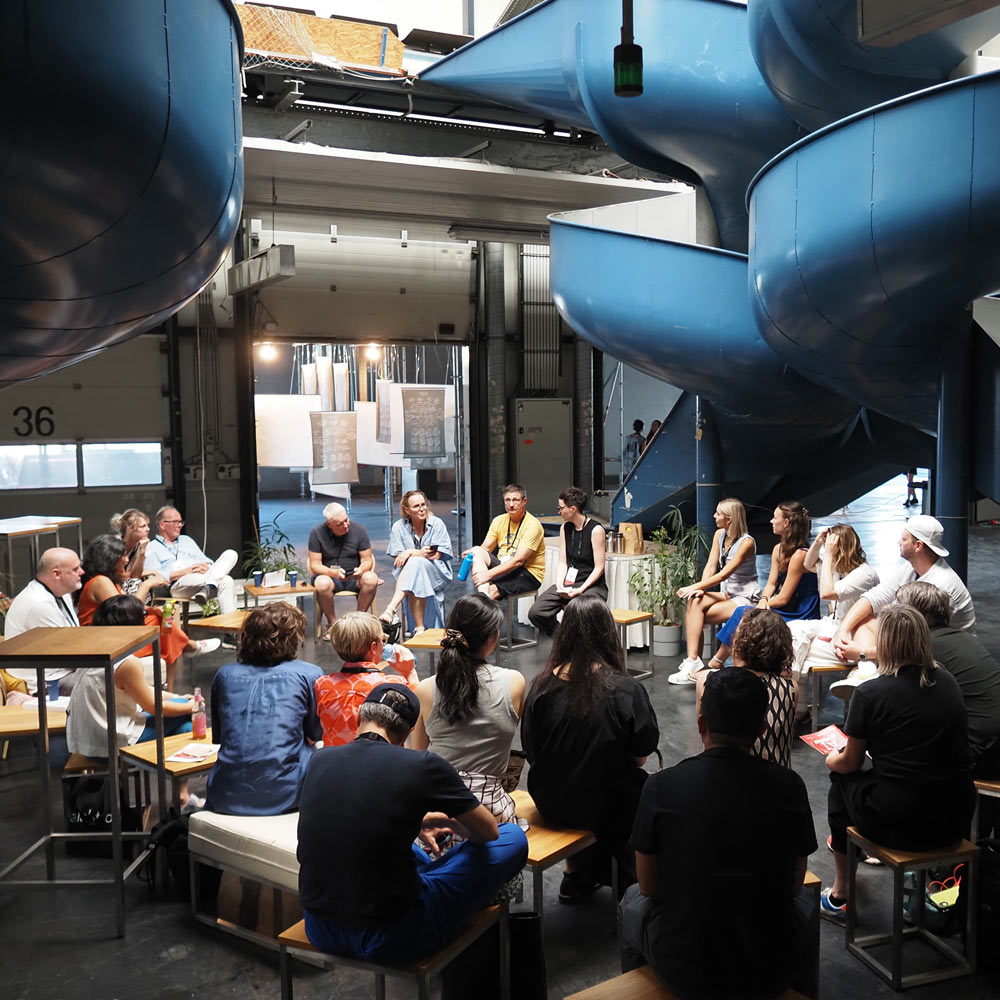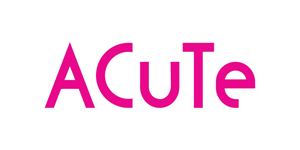Loading...
[{"title":"EGON SCHIELE\u2014A Personal Encounter","location":"Ars Electronica Center, Level -1, Seminar Room","start":"2025-09-03T10:00:00.000+02:00","end":"2025-09-03T13:45:00.000+02:00","formatted_date":"03\/09\/2025","formatted_time":"10:00","formatted_end_time":"13:45","start_timestamp":1756886400,"date_key":"2025-09-03","link":"https:\/\/ars.electronica.art\/panic\/en\/view\/egon-schiele-a-personal-encounter-21d38ddb450c815788d8c779909a282b"},{"title":"The Oracle: Ritual for the Future","location":"POSTCITY, First Floor, The Oracle","start":"2025-09-03T12:30:00.000+02:00","end":"2025-09-03T13:45:00.000+02:00","formatted_date":"03\/09\/2025","formatted_time":"12:30","formatted_end_time":"13:45","start_timestamp":1756895400,"date_key":"2025-09-03","link":"https:\/\/ars.electronica.art\/panic\/en\/view\/the-oracle-ritual-for-the-future-23038ddb450c81348779c8071d6269d2"},{"title":"The lost limbo: Sister Lin-Tou","location":"POSTCITY, First Floor, Features Exhibition","start":"2025-09-03T13:00:00.000+02:00","end":"2025-09-03T14:00:00.000+02:00","formatted_date":"03\/09\/2025","formatted_time":"13:00","formatted_end_time":"14:00","start_timestamp":1756897200,"date_key":"2025-09-03","link":"https:\/\/ars.electronica.art\/panic\/en\/view\/the-lost-limbo-sister-lin-tou-22b38ddb450c815aba5decb996636934"},{"title":"Ekklesia","location":"POSTCITY, First Floor, WE GUIDE YOU Meeting Point","start":"2025-09-03T13:30:00.000+02:00","end":"2025-09-03T14:30:00.000+02:00","formatted_date":"03\/09\/2025","formatted_time":"13:30","formatted_end_time":"14:30","start_timestamp":1756899000,"date_key":"2025-09-03","link":"https:\/\/ars.electronica.art\/panic\/en\/view\/ekklesia-20938ddb450c8192ba4ccb607e2ab837"},{"title":"Ekklesia","location":"POSTCITY, First Floor, WE GUIDE YOU Meeting Point","start":"2025-09-03T15:00:00.000+02:00","end":"2025-09-03T16:00:00.000+02:00","formatted_date":"03\/09\/2025","formatted_time":"15:00","formatted_end_time":"16:00","start_timestamp":1756904400,"date_key":"2025-09-03","link":"https:\/\/ars.electronica.art\/panic\/en\/view\/ekklesia-20938ddb450c8192ba4ccb607e2ab837"},{"title":"The Oracle: Ritual for the Future","location":"POSTCITY, First Floor, The Oracle","start":"2025-09-03T15:15:00.000+02:00","end":"2025-09-03T16:30:00.000+02:00","formatted_date":"03\/09\/2025","formatted_time":"15:15","formatted_end_time":"16:30","start_timestamp":1756905300,"date_key":"2025-09-03","link":"https:\/\/ars.electronica.art\/panic\/en\/view\/the-oracle-ritual-for-the-future-23038ddb450c81348779c8071d6269d2"},{"title":"The lost limbo: Sister Lin-Tou","location":"POSTCITY, First Floor, Features Exhibition","start":"2025-09-03T16:00:00.000+02:00","end":"2025-09-03T17:00:00.000+02:00","formatted_date":"03\/09\/2025","formatted_time":"16:00","formatted_end_time":"17:00","start_timestamp":1756908000,"date_key":"2025-09-03","link":"https:\/\/ars.electronica.art\/panic\/en\/view\/the-lost-limbo-sister-lin-tou-22b38ddb450c815aba5decb996636934"},{"title":"EGON SCHIELE\u2014A Personal Encounter","location":"Ars Electronica Center, Level -1, Seminar Room","start":"2025-09-03T16:15:00.000+02:00","end":"2025-09-03T19:00:00.000+02:00","formatted_date":"03\/09\/2025","formatted_time":"16:15","formatted_end_time":"19:00","start_timestamp":1756908900,"date_key":"2025-09-03","link":"https:\/\/ars.electronica.art\/panic\/en\/view\/egon-schiele-a-personal-encounter-21d38ddb450c815788d8c779909a282b"},{"title":"Ekklesia","location":"POSTCITY, First Floor, WE GUIDE YOU Meeting Point","start":"2025-09-03T16:30:00.000+02:00","end":"2025-09-03T17:30:00.000+02:00","formatted_date":"03\/09\/2025","formatted_time":"16:30","formatted_end_time":"17:30","start_timestamp":1756909800,"date_key":"2025-09-03","link":"https:\/\/ars.electronica.art\/panic\/en\/view\/ekklesia-20938ddb450c8192ba4ccb607e2ab837"},{"title":"The Oracle: Ritual for the Future","location":"POSTCITY, First Floor, The Oracle","start":"2025-09-03T17:15:00.000+02:00","end":"2025-09-03T18:30:00.000+02:00","formatted_date":"03\/09\/2025","formatted_time":"17:15","formatted_end_time":"18:30","start_timestamp":1756912500,"date_key":"2025-09-03","link":"https:\/\/ars.electronica.art\/panic\/en\/view\/the-oracle-ritual-for-the-future-23038ddb450c81348779c8071d6269d2"},{"title":"SUNFLOWER \/ BUTTERFLY ORCHID","location":"Ars Electronica Center, Level 0, Deep Space 8K","start":"2025-09-03T19:30:00.000+02:00","end":"2025-09-03T20:00:00.000+02:00","formatted_date":"03\/09\/2025","formatted_time":"19:30","formatted_end_time":"20:00","start_timestamp":1756920600,"date_key":"2025-09-03","link":"https:\/\/ars.electronica.art\/panic\/en\/view\/sunflower-butterfly-orchid-21438ddb450c818fb152caf0ec191b8c"},{"title":"EGON SCHIELE\u2014A Personal Encounter","location":"Ars Electronica Center, Level -1, Seminar Room","start":"2025-09-04T10:00:00.000+02:00","end":"2025-09-04T13:45:00.000+02:00","formatted_date":"04\/09\/2025","formatted_time":"10:00","formatted_end_time":"13:45","start_timestamp":1756972800,"date_key":"2025-09-04","link":"https:\/\/ars.electronica.art\/panic\/en\/view\/egon-schiele-a-personal-encounter-21d38ddb450c815788d8c779909a282b"},{"title":"Ekklesia","location":"POSTCITY, First Floor, WE GUIDE YOU Meeting Point","start":"2025-09-04T10:30:00.000+02:00","end":"2025-09-04T11:30:00.000+02:00","formatted_date":"04\/09\/2025","formatted_time":"10:30","formatted_end_time":"11:30","start_timestamp":1756974600,"date_key":"2025-09-04","link":"https:\/\/ars.electronica.art\/panic\/en\/view\/ekklesia-20938ddb450c8192ba4ccb607e2ab837"},{"title":"making friends","location":"POSTCITY, First Floor, Campus","start":"2025-09-04T11:00:00.000+02:00","end":"2025-09-04T11:30:00.000+02:00","formatted_date":"04\/09\/2025","formatted_time":"11:00","formatted_end_time":"11:30","start_timestamp":1756976400,"date_key":"2025-09-04","link":"https:\/\/ars.electronica.art\/panic\/en\/view\/making-friends-21438ddb450c8114bc51dcf37294e86b"},{"title":"Ekklesia","location":"POSTCITY, First Floor, WE GUIDE YOU Meeting Point","start":"2025-09-04T12:00:00.000+02:00","end":"2025-09-04T13:00:00.000+02:00","formatted_date":"04\/09\/2025","formatted_time":"12:00","formatted_end_time":"13:00","start_timestamp":1756980000,"date_key":"2025-09-04","link":"https:\/\/ars.electronica.art\/panic\/en\/view\/ekklesia-20938ddb450c8192ba4ccb607e2ab837"},{"title":"AREYOUARE","location":"POSTCITY, Ground Floor, Exhibition Area","start":"2025-09-04T12:30:00.000+02:00","end":"2025-09-04T13:30:00.000+02:00","formatted_date":"04\/09\/2025","formatted_time":"12:30","formatted_end_time":"13:30","start_timestamp":1756981800,"date_key":"2025-09-04","link":"https:\/\/ars.electronica.art\/panic\/en\/view\/areyouare-22a38ddb450c81f4a528e4718c034cf0"},{"title":"The Oracle: Ritual for the Future","location":"POSTCITY, First Floor, The Oracle","start":"2025-09-04T12:30:00.000+02:00","end":"2025-09-04T13:45:00.000+02:00","formatted_date":"04\/09\/2025","formatted_time":"12:30","formatted_end_time":"13:45","start_timestamp":1756981800,"date_key":"2025-09-04","link":"https:\/\/ars.electronica.art\/panic\/en\/view\/the-oracle-ritual-for-the-future-23038ddb450c81348779c8071d6269d2"},{"title":"White Hunger","location":"Ars Electronica Center, Maindeck, Entrance Futurelab","start":"2025-09-04T12:30:00.000+02:00","end":"2025-09-04T13:30:00.000+02:00","formatted_date":"04\/09\/2025","formatted_time":"12:30","formatted_end_time":"13:30","start_timestamp":1756981800,"date_key":"2025-09-04","link":"https:\/\/ars.electronica.art\/panic\/en\/view\/white-hunger-22f38ddb450c81cb82dfc3f9f0a8de07"},{"title":"The lost limbo: Sister Lin-Tou","location":"POSTCITY, First Floor, Features Exhibition","start":"2025-09-04T13:00:00.000+02:00","end":"2025-09-04T14:00:00.000+02:00","formatted_date":"04\/09\/2025","formatted_time":"13:00","formatted_end_time":"14:00","start_timestamp":1756983600,"date_key":"2025-09-04","link":"https:\/\/ars.electronica.art\/panic\/en\/view\/the-lost-limbo-sister-lin-tou-22b38ddb450c815aba5decb996636934"},{"title":"White Hunger","location":"Ars Electronica Center, Maindeck, Entrance Futurelab","start":"2025-09-04T14:00:00.000+02:00","end":"2025-09-04T15:00:00.000+02:00","formatted_date":"04\/09\/2025","formatted_time":"14:00","formatted_end_time":"15:00","start_timestamp":1756987200,"date_key":"2025-09-04","link":"https:\/\/ars.electronica.art\/panic\/en\/view\/white-hunger-22f38ddb450c81cb82dfc3f9f0a8de07"},{"title":"The Oracle: Ritual for the Future","location":"POSTCITY, First Floor, The Oracle","start":"2025-09-04T15:15:00.000+02:00","end":"2025-09-04T16:30:00.000+02:00","formatted_date":"04\/09\/2025","formatted_time":"15:15","formatted_end_time":"16:30","start_timestamp":1756991700,"date_key":"2025-09-04","link":"https:\/\/ars.electronica.art\/panic\/en\/view\/the-oracle-ritual-for-the-future-23038ddb450c81348779c8071d6269d2"},{"title":"Ekklesia","location":"POSTCITY, First Floor, WE GUIDE YOU Meeting Point","start":"2025-09-04T15:30:00.000+02:00","end":"2025-09-04T16:30:00.000+02:00","formatted_date":"04\/09\/2025","formatted_time":"15:30","formatted_end_time":"16:30","start_timestamp":1756992600,"date_key":"2025-09-04","link":"https:\/\/ars.electronica.art\/panic\/en\/view\/ekklesia-20938ddb450c8192ba4ccb607e2ab837"},{"title":"The lost limbo: Sister Lin-Tou","location":"POSTCITY, First Floor, Features Exhibition","start":"2025-09-04T16:00:00.000+02:00","end":"2025-09-04T17:00:00.000+02:00","formatted_date":"04\/09\/2025","formatted_time":"16:00","formatted_end_time":"17:00","start_timestamp":1756994400,"date_key":"2025-09-04","link":"https:\/\/ars.electronica.art\/panic\/en\/view\/the-lost-limbo-sister-lin-tou-22b38ddb450c815aba5decb996636934"},{"title":"White Hunger","location":"Ars Electronica Center, Maindeck, Entrance Futurelab","start":"2025-09-04T16:00:00.000+02:00","end":"2025-09-04T17:00:00.000+02:00","formatted_date":"04\/09\/2025","formatted_time":"16:00","formatted_end_time":"17:00","start_timestamp":1756994400,"date_key":"2025-09-04","link":"https:\/\/ars.electronica.art\/panic\/en\/view\/white-hunger-22f38ddb450c81cb82dfc3f9f0a8de07"},{"title":"EGON SCHIELE\u2014A Personal Encounter","location":"Ars Electronica Center, Level -1, Seminar Room","start":"2025-09-04T16:15:00.000+02:00","end":"2025-09-04T19:00:00.000+02:00","formatted_date":"04\/09\/2025","formatted_time":"16:15","formatted_end_time":"19:00","start_timestamp":1756995300,"date_key":"2025-09-04","link":"https:\/\/ars.electronica.art\/panic\/en\/view\/egon-schiele-a-personal-encounter-21d38ddb450c815788d8c779909a282b"},{"title":"Ekklesia","location":"POSTCITY, First Floor, WE GUIDE YOU Meeting Point","start":"2025-09-04T17:00:00.000+02:00","end":"2025-09-04T18:00:00.000+02:00","formatted_date":"04\/09\/2025","formatted_time":"17:00","formatted_end_time":"18:00","start_timestamp":1756998000,"date_key":"2025-09-04","link":"https:\/\/ars.electronica.art\/panic\/en\/view\/ekklesia-20938ddb450c8192ba4ccb607e2ab837"},{"title":"The Oracle: Ritual for the Future","location":"POSTCITY, First Floor, The Oracle","start":"2025-09-04T17:15:00.000+02:00","end":"2025-09-04T18:30:00.000+02:00","formatted_date":"04\/09\/2025","formatted_time":"17:15","formatted_end_time":"18:30","start_timestamp":1756998900,"date_key":"2025-09-04","link":"https:\/\/ars.electronica.art\/panic\/en\/view\/the-oracle-ritual-for-the-future-23038ddb450c81348779c8071d6269d2"},{"title":"White Hunger","location":"Ars Electronica Center, Maindeck, Entrance Futurelab","start":"2025-09-04T18:00:00.000+02:00","end":"2025-09-04T19:00:00.000+02:00","formatted_date":"04\/09\/2025","formatted_time":"18:00","formatted_end_time":"19:00","start_timestamp":1757001600,"date_key":"2025-09-04","link":"https:\/\/ars.electronica.art\/panic\/en\/view\/white-hunger-22f38ddb450c81cb82dfc3f9f0a8de07"},{"title":"EGON SCHIELE\u2014A Personal Encounter","location":"Ars Electronica Center, Level -1, Seminar Room","start":"2025-09-05T10:00:00.000+02:00","end":"2025-09-05T13:45:00.000+02:00","formatted_date":"05\/09\/2025","formatted_time":"10:00","formatted_end_time":"13:45","start_timestamp":1757059200,"date_key":"2025-09-05","link":"https:\/\/ars.electronica.art\/panic\/en\/view\/egon-schiele-a-personal-encounter-21d38ddb450c815788d8c779909a282b"},{"title":"Ekklesia","location":"POSTCITY, First Floor, WE GUIDE YOU Meeting Point","start":"2025-09-05T10:30:00.000+02:00","end":"2025-09-05T11:30:00.000+02:00","formatted_date":"05\/09\/2025","formatted_time":"10:30","formatted_end_time":"11:30","start_timestamp":1757061000,"date_key":"2025-09-05","link":"https:\/\/ars.electronica.art\/panic\/en\/view\/ekklesia-20938ddb450c8192ba4ccb607e2ab837"},{"title":"making friends","location":"POSTCITY, First Floor, Campus","start":"2025-09-05T11:00:00.000+02:00","end":"2025-09-05T11:30:00.000+02:00","formatted_date":"05\/09\/2025","formatted_time":"11:00","formatted_end_time":"11:30","start_timestamp":1757062800,"date_key":"2025-09-05","link":"https:\/\/ars.electronica.art\/panic\/en\/view\/making-friends-21438ddb450c8114bc51dcf37294e86b"},{"title":"Ekklesia","location":"POSTCITY, First Floor, WE GUIDE YOU Meeting Point","start":"2025-09-05T12:00:00.000+02:00","end":"2025-09-05T13:00:00.000+02:00","formatted_date":"05\/09\/2025","formatted_time":"12:00","formatted_end_time":"13:00","start_timestamp":1757066400,"date_key":"2025-09-05","link":"https:\/\/ars.electronica.art\/panic\/en\/view\/ekklesia-20938ddb450c8192ba4ccb607e2ab837"},{"title":"White Hunger","location":"Ars Electronica Center, Maindeck, Entrance Futurelab","start":"2025-09-05T12:00:00.000+02:00","end":"2025-09-05T13:00:00.000+02:00","formatted_date":"05\/09\/2025","formatted_time":"12:00","formatted_end_time":"13:00","start_timestamp":1757066400,"date_key":"2025-09-05","link":"https:\/\/ars.electronica.art\/panic\/en\/view\/white-hunger-22f38ddb450c81cb82dfc3f9f0a8de07"},{"title":"AREYOUARE","location":"POSTCITY, Ground Floor, Exhibition Area","start":"2025-09-05T12:30:00.000+02:00","end":"2025-09-05T13:30:00.000+02:00","formatted_date":"05\/09\/2025","formatted_time":"12:30","formatted_end_time":"13:30","start_timestamp":1757068200,"date_key":"2025-09-05","link":"https:\/\/ars.electronica.art\/panic\/en\/view\/areyouare-22a38ddb450c81f4a528e4718c034cf0"},{"title":"The Oracle: Ritual for the Future","location":"POSTCITY, First Floor, The Oracle","start":"2025-09-05T12:30:00.000+02:00","end":"2025-09-05T13:45:00.000+02:00","formatted_date":"05\/09\/2025","formatted_time":"12:30","formatted_end_time":"13:45","start_timestamp":1757068200,"date_key":"2025-09-05","link":"https:\/\/ars.electronica.art\/panic\/en\/view\/the-oracle-ritual-for-the-future-23038ddb450c81348779c8071d6269d2"},{"title":"White Hunger","location":"Ars Electronica Center, Maindeck, Entrance Futurelab","start":"2025-09-05T14:00:00.000+02:00","end":"2025-09-05T15:00:00.000+02:00","formatted_date":"05\/09\/2025","formatted_time":"14:00","formatted_end_time":"15:00","start_timestamp":1757073600,"date_key":"2025-09-05","link":"https:\/\/ars.electronica.art\/panic\/en\/view\/white-hunger-22f38ddb450c81cb82dfc3f9f0a8de07"},{"title":"The Oracle: Ritual for the Future","location":"POSTCITY, First Floor, The Oracle","start":"2025-09-05T15:15:00.000+02:00","end":"2025-09-05T16:30:00.000+02:00","formatted_date":"05\/09\/2025","formatted_time":"15:15","formatted_end_time":"16:30","start_timestamp":1757078100,"date_key":"2025-09-05","link":"https:\/\/ars.electronica.art\/panic\/en\/view\/the-oracle-ritual-for-the-future-23038ddb450c81348779c8071d6269d2"},{"title":"Ekklesia","location":"POSTCITY, First Floor, WE GUIDE YOU Meeting Point","start":"2025-09-05T15:30:00.000+02:00","end":"2025-09-05T16:30:00.000+02:00","formatted_date":"05\/09\/2025","formatted_time":"15:30","formatted_end_time":"16:30","start_timestamp":1757079000,"date_key":"2025-09-05","link":"https:\/\/ars.electronica.art\/panic\/en\/view\/ekklesia-20938ddb450c8192ba4ccb607e2ab837"},{"title":"Town Hall Meeting: Theater & Digital Media","location":"POSTCITY, First Floor, Town Hall, co-hosted by CIFRA","start":"2025-09-05T15:30:00.000+02:00","end":"2025-09-05T17:00:00.000+02:00","formatted_date":"05\/09\/2025","formatted_time":"15:30","formatted_end_time":"17:00","start_timestamp":1757079000,"date_key":"2025-09-05","link":"https:\/\/ars.electronica.art\/panic\/en\/view\/town-hall-meeting-theater-digital-media-22c38ddb450c8072aaddc5ad12fd6872"},{"title":"White Hunger","location":"Ars Electronica Center, Maindeck, Entrance Futurelab","start":"2025-09-05T16:00:00.000+02:00","end":"2025-09-05T17:00:00.000+02:00","formatted_date":"05\/09\/2025","formatted_time":"16:00","formatted_end_time":"17:00","start_timestamp":1757080800,"date_key":"2025-09-05","link":"https:\/\/ars.electronica.art\/panic\/en\/view\/white-hunger-22f38ddb450c81cb82dfc3f9f0a8de07"},{"title":"EGON SCHIELE\u2014A Personal Encounter","location":"Ars Electronica Center, Level -1, Seminar Room","start":"2025-09-05T16:15:00.000+02:00","end":"2025-09-05T19:00:00.000+02:00","formatted_date":"05\/09\/2025","formatted_time":"16:15","formatted_end_time":"19:00","start_timestamp":1757081700,"date_key":"2025-09-05","link":"https:\/\/ars.electronica.art\/panic\/en\/view\/egon-schiele-a-personal-encounter-21d38ddb450c815788d8c779909a282b"},{"title":"Ekklesia","location":"POSTCITY, First Floor, WE GUIDE YOU Meeting Point","start":"2025-09-05T17:00:00.000+02:00","end":"2025-09-05T18:00:00.000+02:00","formatted_date":"05\/09\/2025","formatted_time":"17:00","formatted_end_time":"18:00","start_timestamp":1757084400,"date_key":"2025-09-05","link":"https:\/\/ars.electronica.art\/panic\/en\/view\/ekklesia-20938ddb450c8192ba4ccb607e2ab837"},{"title":"The Oracle: Ritual for the Future","location":"POSTCITY, First Floor, The Oracle","start":"2025-09-05T17:15:00.000+02:00","end":"2025-09-05T18:30:00.000+02:00","formatted_date":"05\/09\/2025","formatted_time":"17:15","formatted_end_time":"18:30","start_timestamp":1757085300,"date_key":"2025-09-05","link":"https:\/\/ars.electronica.art\/panic\/en\/view\/the-oracle-ritual-for-the-future-23038ddb450c81348779c8071d6269d2"},{"title":"White Hunger","location":"Ars Electronica Center, Maindeck, Entrance Futurelab","start":"2025-09-05T18:00:00.000+02:00","end":"2025-09-05T19:00:00.000+02:00","formatted_date":"05\/09\/2025","formatted_time":"18:00","formatted_end_time":"19:00","start_timestamp":1757088000,"date_key":"2025-09-05","link":"https:\/\/ars.electronica.art\/panic\/en\/view\/white-hunger-22f38ddb450c81cb82dfc3f9f0a8de07"},{"title":"Big Concert Night","location":"POSTCITY, Ground Floor, Train Hall","start":"2025-09-05T19:00:00.000+02:00","end":"2025-09-05T21:30:00.000+02:00","formatted_date":"05\/09\/2025","formatted_time":"19:00","formatted_end_time":"21:30","start_timestamp":1757091600,"date_key":"2025-09-05","link":"https:\/\/ars.electronica.art\/panic\/en\/view\/big-concert-night-1e338ddb450c80e89ed5e2a5d7743d65"},{"title":"The Trial Against Humanity","location":"Ars Electronica Center, Level 0, Deep Space 8K","start":"2025-09-05T20:00:00.000+02:00","end":"2025-09-05T21:00:00.000+02:00","formatted_date":"05\/09\/2025","formatted_time":"20:00","formatted_end_time":"21:00","start_timestamp":1757095200,"date_key":"2025-09-05","link":"https:\/\/ars.electronica.art\/panic\/en\/view\/the-trial-against-humanity-21838ddb450c8111b116e9307d07d288"},{"title":"DRIFT IN TIME","location":"Ars Electronica Center, Level 0, Deep Space 8K","start":"2025-09-05T22:00:00.000+02:00","end":"2025-09-05T22:30:00.000+02:00","formatted_date":"05\/09\/2025","formatted_time":"22:00","formatted_end_time":"22:30","start_timestamp":1757102400,"date_key":"2025-09-05","link":"https:\/\/ars.electronica.art\/panic\/en\/view\/drift-in-time-21438ddb450c814dac1dda7bcb481bc2"},{"title":"EGON SCHIELE\u2014A Personal Encounter","location":"Ars Electronica Center, Level -1, Seminar Room","start":"2025-09-06T10:00:00.000+02:00","end":"2025-09-06T13:45:00.000+02:00","formatted_date":"06\/09\/2025","formatted_time":"10:00","formatted_end_time":"13:45","start_timestamp":1757145600,"date_key":"2025-09-06","link":"https:\/\/ars.electronica.art\/panic\/en\/view\/egon-schiele-a-personal-encounter-21d38ddb450c815788d8c779909a282b"},{"title":"The Oracle: Ritual for the Future","location":"POSTCITY, First Floor, The Oracle","start":"2025-09-06T10:15:00.000+02:00","end":"2025-09-06T11:30:00.000+02:00","formatted_date":"06\/09\/2025","formatted_time":"10:15","formatted_end_time":"11:30","start_timestamp":1757146500,"date_key":"2025-09-06","link":"https:\/\/ars.electronica.art\/panic\/en\/view\/the-oracle-ritual-for-the-future-23038ddb450c81348779c8071d6269d2"},{"title":"Ekklesia","location":"POSTCITY, First Floor, WE GUIDE YOU Meeting Point","start":"2025-09-06T10:30:00.000+02:00","end":"2025-09-06T11:30:00.000+02:00","formatted_date":"06\/09\/2025","formatted_time":"10:30","formatted_end_time":"11:30","start_timestamp":1757147400,"date_key":"2025-09-06","link":"https:\/\/ars.electronica.art\/panic\/en\/view\/ekklesia-20938ddb450c8192ba4ccb607e2ab837"},{"title":"making friends","location":"POSTCITY, First Floor, Campus","start":"2025-09-06T11:00:00.000+02:00","end":"2025-09-06T11:30:00.000+02:00","formatted_date":"06\/09\/2025","formatted_time":"11:00","formatted_end_time":"11:30","start_timestamp":1757149200,"date_key":"2025-09-06","link":"https:\/\/ars.electronica.art\/panic\/en\/view\/making-friends-21438ddb450c8114bc51dcf37294e86b"},{"title":"STAGED REALITIES","location":"POSTCITY, First Floor, Conference Hall","start":"2025-09-06T11:00:00.000+02:00","end":"2025-09-06T17:00:00.000+02:00","formatted_date":"06\/09\/2025","formatted_time":"11:00","formatted_end_time":"17:00","start_timestamp":1757149200,"date_key":"2025-09-06","link":"https:\/\/ars.electronica.art\/panic\/en\/view\/staged-realities-1e338ddb450c80ddbdaedd56c1a80572"},{"title":"Ekklesia","location":"POSTCITY, First Floor, WE GUIDE YOU Meeting Point","start":"2025-09-06T12:00:00.000+02:00","end":"2025-09-06T13:00:00.000+02:00","formatted_date":"06\/09\/2025","formatted_time":"12:00","formatted_end_time":"13:00","start_timestamp":1757152800,"date_key":"2025-09-06","link":"https:\/\/ars.electronica.art\/panic\/en\/view\/ekklesia-20938ddb450c8192ba4ccb607e2ab837"},{"title":"White Hunger","location":"Ars Electronica Center, Maindeck, Entrance Futurelab","start":"2025-09-06T12:00:00.000+02:00","end":"2025-09-06T13:00:00.000+02:00","formatted_date":"06\/09\/2025","formatted_time":"12:00","formatted_end_time":"13:00","start_timestamp":1757152800,"date_key":"2025-09-06","link":"https:\/\/ars.electronica.art\/panic\/en\/view\/white-hunger-22f38ddb450c81cb82dfc3f9f0a8de07"},{"title":"The Oracle: Ritual for the Future","location":"POSTCITY, First Floor, The Oracle","start":"2025-09-06T12:15:00.000+02:00","end":"2025-09-06T13:30:00.000+02:00","formatted_date":"06\/09\/2025","formatted_time":"12:15","formatted_end_time":"13:30","start_timestamp":1757153700,"date_key":"2025-09-06","link":"https:\/\/ars.electronica.art\/panic\/en\/view\/the-oracle-ritual-for-the-future-23038ddb450c81348779c8071d6269d2"},{"title":"White Hunger","location":"Ars Electronica Center, Maindeck, Entrance Futurelab","start":"2025-09-06T14:00:00.000+02:00","end":"2025-09-06T15:00:00.000+02:00","formatted_date":"06\/09\/2025","formatted_time":"14:00","formatted_end_time":"15:00","start_timestamp":1757160000,"date_key":"2025-09-06","link":"https:\/\/ars.electronica.art\/panic\/en\/view\/white-hunger-22f38ddb450c81cb82dfc3f9f0a8de07"},{"title":"Ekklesia","location":"POSTCITY, First Floor, WE GUIDE YOU Meeting Point","start":"2025-09-06T15:30:00.000+02:00","end":"2025-09-06T16:30:00.000+02:00","formatted_date":"06\/09\/2025","formatted_time":"15:30","formatted_end_time":"16:30","start_timestamp":1757165400,"date_key":"2025-09-06","link":"https:\/\/ars.electronica.art\/panic\/en\/view\/ekklesia-20938ddb450c8192ba4ccb607e2ab837"},{"title":"White Hunger","location":"Ars Electronica Center, Maindeck, Entrance Futurelab","start":"2025-09-06T16:00:00.000+02:00","end":"2025-09-06T17:00:00.000+02:00","formatted_date":"06\/09\/2025","formatted_time":"16:00","formatted_end_time":"17:00","start_timestamp":1757167200,"date_key":"2025-09-06","link":"https:\/\/ars.electronica.art\/panic\/en\/view\/white-hunger-22f38ddb450c81cb82dfc3f9f0a8de07"},{"title":"EGON SCHIELE\u2014A Personal Encounter","location":"Ars Electronica Center, Level -1, Seminar Room","start":"2025-09-06T16:15:00.000+02:00","end":"2025-09-06T19:00:00.000+02:00","formatted_date":"06\/09\/2025","formatted_time":"16:15","formatted_end_time":"19:00","start_timestamp":1757168100,"date_key":"2025-09-06","link":"https:\/\/ars.electronica.art\/panic\/en\/view\/egon-schiele-a-personal-encounter-21d38ddb450c815788d8c779909a282b"},{"title":"AREYOUARE","location":"POSTCITY, Ground Floor, Exhibition Area","start":"2025-09-06T17:00:00.000+02:00","end":"2025-09-06T18:00:00.000+02:00","formatted_date":"06\/09\/2025","formatted_time":"17:00","formatted_end_time":"18:00","start_timestamp":1757170800,"date_key":"2025-09-06","link":"https:\/\/ars.electronica.art\/panic\/en\/view\/areyouare-22a38ddb450c81f4a528e4718c034cf0"},{"title":"Ekklesia","location":"POSTCITY, First Floor, WE GUIDE YOU Meeting Point","start":"2025-09-06T17:00:00.000+02:00","end":"2025-09-06T18:00:00.000+02:00","formatted_date":"06\/09\/2025","formatted_time":"17:00","formatted_end_time":"18:00","start_timestamp":1757170800,"date_key":"2025-09-06","link":"https:\/\/ars.electronica.art\/panic\/en\/view\/ekklesia-20938ddb450c8192ba4ccb607e2ab837"},{"title":"The Oracle: Ritual for the Future","location":"POSTCITY, First Floor, The Oracle","start":"2025-09-06T17:15:00.000+02:00","end":"2025-09-06T18:30:00.000+02:00","formatted_date":"06\/09\/2025","formatted_time":"17:15","formatted_end_time":"18:30","start_timestamp":1757171700,"date_key":"2025-09-06","link":"https:\/\/ars.electronica.art\/panic\/en\/view\/the-oracle-ritual-for-the-future-23038ddb450c81348779c8071d6269d2"},{"title":"EGON SCHIELE\u2014A Personal Encounter","location":"Ars Electronica Center, Level -1, Seminar Room","start":"2025-09-07T10:00:00.000+02:00","end":"2025-09-07T13:45:00.000+02:00","formatted_date":"07\/09\/2025","formatted_time":"10:00","formatted_end_time":"13:45","start_timestamp":1757232000,"date_key":"2025-09-07","link":"https:\/\/ars.electronica.art\/panic\/en\/view\/egon-schiele-a-personal-encounter-21d38ddb450c815788d8c779909a282b"},{"title":"The Oracle: Ritual for the Future","location":"POSTCITY, First Floor, The Oracle","start":"2025-09-07T10:15:00.000+02:00","end":"2025-09-07T11:30:00.000+02:00","formatted_date":"07\/09\/2025","formatted_time":"10:15","formatted_end_time":"11:30","start_timestamp":1757232900,"date_key":"2025-09-07","link":"https:\/\/ars.electronica.art\/panic\/en\/view\/the-oracle-ritual-for-the-future-23038ddb450c81348779c8071d6269d2"},{"title":"Ekklesia","location":"POSTCITY, First Floor, WE GUIDE YOU Meeting Point","start":"2025-09-07T10:30:00.000+02:00","end":"2025-09-07T11:30:00.000+02:00","formatted_date":"07\/09\/2025","formatted_time":"10:30","formatted_end_time":"11:30","start_timestamp":1757233800,"date_key":"2025-09-07","link":"https:\/\/ars.electronica.art\/panic\/en\/view\/ekklesia-20938ddb450c8192ba4ccb607e2ab837"},{"title":"making friends","location":"POSTCITY, First Floor, Campus","start":"2025-09-07T11:00:00.000+02:00","end":"2025-09-07T11:30:00.000+02:00","formatted_date":"07\/09\/2025","formatted_time":"11:00","formatted_end_time":"11:30","start_timestamp":1757235600,"date_key":"2025-09-07","link":"https:\/\/ars.electronica.art\/panic\/en\/view\/making-friends-21438ddb450c8114bc51dcf37294e86b"},{"title":"Ekklesia","location":"POSTCITY, First Floor, WE GUIDE YOU Meeting Point","start":"2025-09-07T12:00:00.000+02:00","end":"2025-09-07T13:00:00.000+02:00","formatted_date":"07\/09\/2025","formatted_time":"12:00","formatted_end_time":"13:00","start_timestamp":1757239200,"date_key":"2025-09-07","link":"https:\/\/ars.electronica.art\/panic\/en\/view\/ekklesia-20938ddb450c8192ba4ccb607e2ab837"},{"title":"The Oracle: Ritual for the Future","location":"POSTCITY, First Floor, The Oracle","start":"2025-09-07T12:15:00.000+02:00","end":"2025-09-07T13:30:00.000+02:00","formatted_date":"07\/09\/2025","formatted_time":"12:15","formatted_end_time":"13:30","start_timestamp":1757240100,"date_key":"2025-09-07","link":"https:\/\/ars.electronica.art\/panic\/en\/view\/the-oracle-ritual-for-the-future-23038ddb450c81348779c8071d6269d2"},{"title":"The Oracle: Ritual for the Future","location":"POSTCITY, First Floor, The Oracle","start":"2025-09-07T14:00:00.000+02:00","end":"2025-09-07T15:15:00.000+02:00","formatted_date":"07\/09\/2025","formatted_time":"14:00","formatted_end_time":"15:15","start_timestamp":1757246400,"date_key":"2025-09-07","link":"https:\/\/ars.electronica.art\/panic\/en\/view\/the-oracle-ritual-for-the-future-23038ddb450c81348779c8071d6269d2"},{"title":"Ekklesia","location":"POSTCITY, First Floor, WE GUIDE YOU Meeting Point","start":"2025-09-07T14:30:00.000+02:00","end":"2025-09-07T15:30:00.000+02:00","formatted_date":"07\/09\/2025","formatted_time":"14:30","formatted_end_time":"15:30","start_timestamp":1757248200,"date_key":"2025-09-07","link":"https:\/\/ars.electronica.art\/panic\/en\/view\/ekklesia-20938ddb450c8192ba4ccb607e2ab837"},{"title":"EGON SCHIELE\u2014A Personal Encounter","location":"Ars Electronica Center, Level -1, Seminar Room","start":"2025-09-07T16:15:00.000+02:00","end":"2025-09-07T18:00:00.000+02:00","formatted_date":"07\/09\/2025","formatted_time":"16:15","formatted_end_time":"18:00","start_timestamp":1757254500,"date_key":"2025-09-07","link":"https:\/\/ars.electronica.art\/panic\/en\/view\/egon-schiele-a-personal-encounter-21d38ddb450c815788d8c779909a282b"}]
